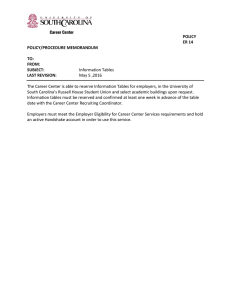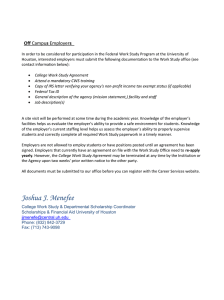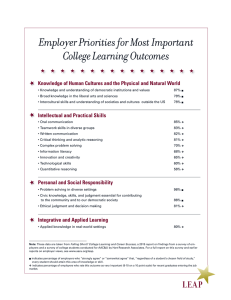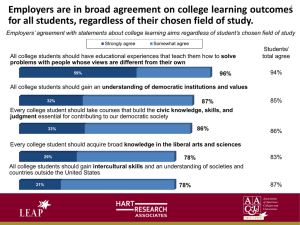CASE STUDY: The Civic Leaders Fellowship
advertisement
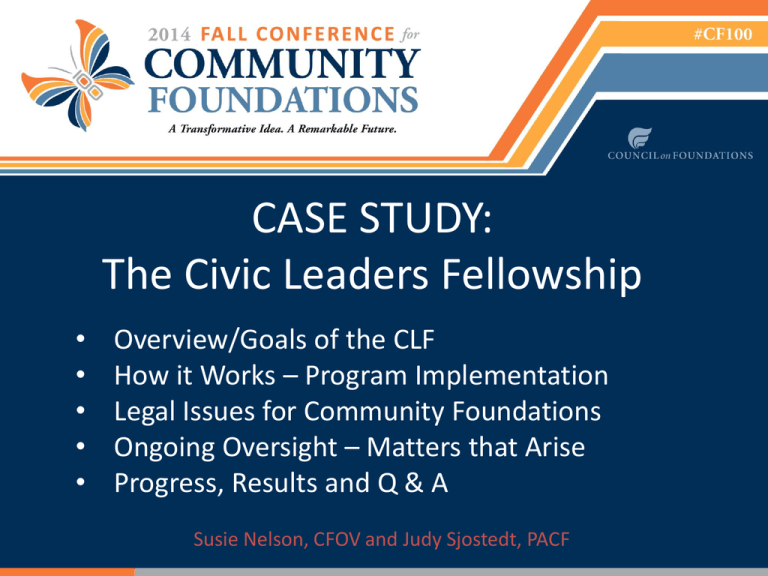
CASE STUDY: The Civic Leaders Fellowship • • • • • Overview/Goals of the CLF How it Works – Program Implementation Legal Issues for Community Foundations Ongoing Oversight – Matters that Arise Progress, Results and Q & A Susie Nelson, CFOV and Judy Sjostedt, PACF Overview/Goals http://www.youtube.com/watch?v=71IehqG0G3I Program Process • Identify employment method (contract partner) • Establish Independent Advisory Panel • Design competitive application processes and selection means for applicants and employers • Criteria for applicants • Criteria for employers • Advertise the program widely • Use the Advisory Committee to select students and businesses – try to match Program Process continued … • Schedule interviews for selected students and businesses [PACF did not use interviews] • Find additional businesses (won’t always be perfect matches)[AFTER students selected] • Plan Friday Leadership Sessions: differs by cohort year – Year 1 is group learning focused; Year 2 community team focused; Year 3 personal/career focused • Plan orientation for students and businesses Program Process • Pre-test for students (civic and community knowledge and interest) • Students work for six full weeks M-Th with a different F program depending on cohort year • Program director – visit employers periodically during the six work weeks • End of session evaluations • Administer post-test for students • End of session group luncheon/other activity Legal Issues to Consider at Each Stage 1. 2. 3. 4. 5. 6. Accomplishing Employment Application Prep and Candidate Recruitment Donors and Donor Involvement Appropriate Engagement of Employers Applicant Selection and Hiring Operational Issues Accomplishing Employment Before soliciting applicants, consider: • Will students receive compensation? See Fair Labor Standards Act, Fact Sheet 71, Wage and Hour Division, US Dept. of Labor. • Wages or stipends? Rate? Overtime? • How will employment be accomplished? (Foundation as employer, contract employment service, etc.) • Understand worker’s compensation, taxation, etc. • Determine how job-related reimbursements occur. Application Prep – Candidate Recruitment Be aware of EEO protections in crafting the application. Questions must be: • Non-discriminatory – employers are explicitly prohibited from certain pre-employment inquiries • Clearly work-related – request approval up front to secure any needed background checks, drug testing • Understand the concept of reasonable accommodation • Understand that while one can ask questions about such topics as interest in returning to the area, responses are unenforceable Establish the process (hard copy, online, etc.) Donors and Donor Involvement • No gifts to individuals – gifts to program only! Can target a gift to a specific geographic community, but use great caution if only one donor-one applicant. • No donors – not even in a minority capacity – involved in selection or assignment processes. • ABSOLUTELY NO PAY TO PLAY! If a donor is also a potential host employer, NO relationship whatsoever to whether receives an intern. • Be aware-some grantors may not permit resources to be used to support a student at a for-profit entity. Appropriate Engagement of Employers GROUND RULE: Student experience is primary; employer involvement supports students. Foundation role: orientation to internship, outline program expectations in advance. Employer role: deliver a safe, healthy work environment free of hazard or harassment, provide a localized orientation for intern. Employer cannot: select or interview intern, employ student outside of program; displace existing employees or supplant with Foundation interns. Planning for a Safe, Healthy Work Environment • OSHA Compliance – does student need any specialized equipment? (steel-toed shoes) • Training – does student need any particular training to function safely? (safety procedures, special protocols - hospitals) • Job-related matters – what does student need to know to work there? (HIPPA Privacy rules, proprietary info protection, for ex. photos of work sites can be a concern) Applicant Selection and Hiring Establish a process by which to select students. Outline criteria for selection in advance so it can be applied fairly; ensure non-discriminatory. Foundation conflict of Interest, confidentiality policies apply when making the selections – no employers or donors on selection panel. Choose students before employers; match students to employers-no employer involvement. Ensure any pre-related testing occurs pre-hiring (drugtesting for certain employers, for ex.) Extend offers, explain terms in writing (contract, etc.). Ongoing Oversight-Matters that Arise • Means to report time (approvals needed, etc.) and/or to request reimbursements • Protocol for reporting of illness, etc. • Appropriate-inappropriate workplace behaviors (reporting harassment, for ex.) • Protocol for emergencies (example, vehicle accident, student injury at work, etc.) • Terminating a participant • Handling renewals • And, just when you think you’re safe… Progress, Results and Q &A Year One: 14 students and employers PACF: 15 student participants and employers, 1 student term. Year Two: 34 students and employers PACF: 14 first year, 12 second year; CFOV: 8 first year Year Three: 45 students and employers PACF: 15 first year, 8 second year, 6 third year CFOV: 8 first year, 8 second year So far: all-gains in knowledge and interest, 2 local jobs, 1 McNair Scholar, several higher education, greater civic engagement. Questions?
